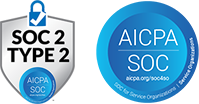What Is Defined Contribution Plan?
A Defined Contribution Plan is a retirement savings program in which employers, employees, or both make fixed contributions into individual accounts for each participant. Unlike pension plans that promise a specific payout, DC plans—such as 401(k), 403(b), and profit-sharing plans—leave investment growth and final benefit amounts dependent on market returns and contribution levels.
Why Defined Contribution Plan Matters
DC plans shift investment risk to employees while offering portability between employers. They provide transparent, account-based savings, enabling participants to track balances in real time and adjust contributions. For organizations, DC plans simplify retirement-benefit budgeting by capping employer obligations to stated contributions rather than unpredictable pension liabilities.
Where Defined Contribution Plans Are Used
- Corporate Workforces: Large and mid-sized companies offer 401(k) plans with matching contributions to attract talent.
- Nonprofits & Education: 403(b) plans allow tax-deferred retirement savings for teachers and nonprofit staff.
- Government Employees: 457(b) deferred-compensation plans serve state and local workers.
- Small Businesses: SIMPLE IRAs and SEP IRAs provide cost-effective DC alternatives.
- Gig & Contract Workers: Solo 401(k) or SEP IRAs enable self-employed individuals to save with higher limits.
Defined Contribution Plan Key Benefits
- Portability: Employees retain accounts when changing jobs, maintaining retirement continuity.
- Cost Control: Employers’ liabilities are limited to fixed contributions, aiding cash-flow planning.
- Participant Ownership: Individual accounts empower employees to choose investment allocations.
- Tax Advantages: Contributions grow tax-deferred—and in Roth variants, qualified withdrawals are tax-free.
- Flexibility: Plans may include employer matches, profit-sharing, or discretionary contributions based on profitability.
Best Practices & Examples
- Match Programs: Offer a 50–100% match on the first 6% of salary to encourage participation—one firm saw plan uptake jump from 60% to 88%.
- Auto-Enrollment & Escalation: Automatically enroll new hires at 3% deferral with annual increases up to 10% to boost savings rates.
- Fiduciary Governance: Establish a retirement-plan committee to oversee investment menus, vendor performance, and fee benchmarking.
- Financial Wellness: Complement DC plans with budgeting tools and education sessions, improving contribution rates and informed investing.
- Loan & Hardship Provisions: Incorporate plan loans or hardship distributions to address acute participant needs while preserving retirement focus.
Conclusion
Defined Contribution Plans empower employees to save for retirement with clarity and portability while giving employers predictable, controlled costs. By combining strategic plan design—with matching, auto-features, and education—and robust governance, organizations foster financial security for their workforce and simplify benefit administration.
Defined Contribution Plan FAQs
Q: What is defined as a contribution plan?
A contribution plan is a retirement program where fixed contributions are made to individual accounts—by employers, employees, or both—with ultimate benefits determined by contributions plus investment returns.
Q: What is a defined contribution plan example?
Examples include 401(k) plans in private companies, 403(b) plans for educators and nonprofits, and 457(b) deferred-compensation plans for government workers, each funding individual retirement accounts.
Q: What is the difference between a defined contribution and a defined benefit pension plan?
A Defined Contribution plan caps contributions and leaves investment risk with participants; a Defined Benefit plan promises a specified retirement payout funded and managed by the employer, who bears the investment risk.
Q: What is the most common defined contribution plan?
The 401(k) plan is the most common DC plan in the U.S., offering tax-deferred savings, employer matching, and broad investment options for private-sector employees.




